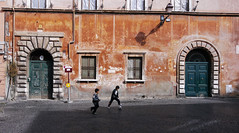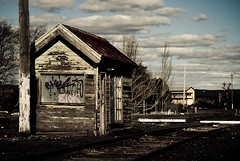Melbourne is well known for its propensity to have 4 seasons in one day, especially in Summer when it can be blistering hot 45DegC with strong north winds and then within an hour much cooler with strong southerly winds thanks to its geographical position which exposes it to frequent cold fronts from the Southern Ocean or from around Antarctica.
But in Winter, it can generally be relied upon to be cool to cold thanks to its latitude of around 38deg South and sitting south of the Great Dividing Range.
Fortunately for Melbournians it is only a 2.5 hour drive north over the Great Dividing Range to Echuca on the Murray River which may give a very different winter experience with sunny days and temperatures a few degrees warmer than Melbourne (although colder nights thanks to being inland and away from coastal maritime moderating influences).
Echuca was an important inland port on the Murray River in the late 19th and early 20th centuries after it was founded by Henry Hopwood in 1853 when punts and a pontoon bridge made it the only means of crossing the Murray and Campaspe Rivers. In 1855 Major Thomas Mitchell purchased allotment in 612 High St on which he built a hotel.
In 1864, Echuca became an increasingly important inland port when the Melbourne-Echuca railroad was completed allowing paddle steamers to transport wool from Darling & Murrumbidgee Rivers as far north as almost the Queensland border to Melbourne where it was then exported overseas.
In the 1870’s Echuca’s paddle steamer and red gum timber industries flourished to make it the largest inland port in Australia and second only to Melbourne as a port. Eventually though, the success of the railroad was to adversely impact the paddle steamer industries.
After a severe drought in 1914 which left most of the Murray River as a series of pools, work began in the 1920’s to construct dams and weirs along the river to better control flows and allow the steamers to run consistently.
Today, Echuca is mainly a tourist attraction with its historic port, historic paddle steamers, house boats, golf courses, nearby wineries, and being adjacent to the largest red gum Eucalypt forest in the world – one can drive a 4WD alongs its tracks (when not flooded) for some 380km including the adjacent Barmah forest to its north-east and the Gunbower National Park along the Murray to it west which have popular dispersed camping locations.
Above is my photo of the beautiful red gums at a dispersed camp site along the Murray River in Gunbower National Park – note the spray painted cricket stumps for campers to enjoy a game of cricket.
If camping in the forest, you should not camp under branches of these trees, especially in Summer or Autumn after a drought as some of these trees tend to drop their branches suddenly and without warning and this can be lethal. Branches 10-30cm in diameter are more prone to fall and often have no signs of structural weakness and hence are very difficult to predict the risk.
One should also be aware that in the warmer months, especially after floods or heavy rains, mosquitoes can be problematic and these may transmit various viruses such as Murray Valley Encephalitis virus, Barmah Forest virus, and Ross River virus.
More information and links relating to Echuca can be found on my wikipedia here.











